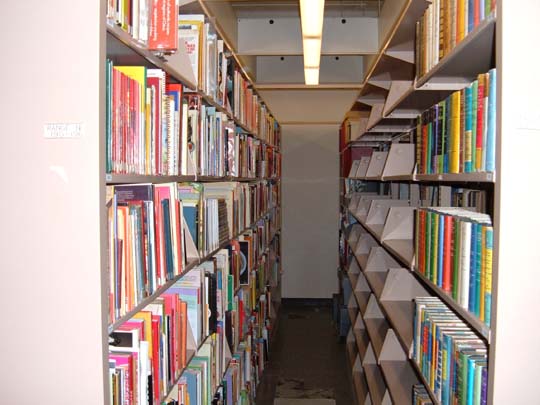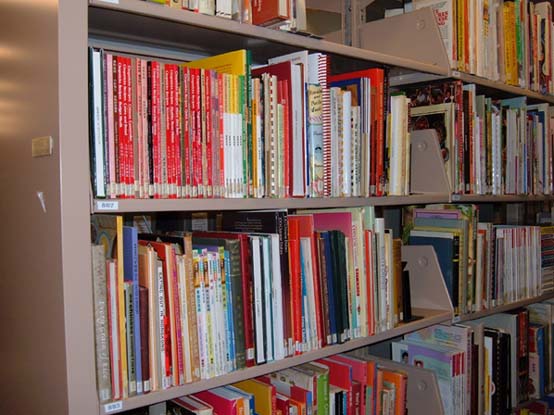
| What is Flavor and Fortune? |
| How do I subscribe? |
| How do I get past issues? |
| How do I advertise? |
| How do I contact the editor? |
Read 12726110 times
Connect me to:
| Home |
| Articles |
| Book reviews |
| Letters to the Editor |
| Newmans News and Notes |
| Recipes |
| Restaurant reviews |
| Article Index (all years, slow) |
| List of Article Years |
| Article Index (2025) |
| Article Index (last 2 years) |
| Things others say |
| Related Links |
| Log In... |
| Authors |
| Categories & Topics |
Chinese Cookbook Collection and Online Data Base at Stony Brook University
| by Jacqueline M. Newman |
Resources
Spring Volume: 2006 Issue: 13(1) page(s): 32
Foodies and Chinaphiles: Stony Brook, one of the State University of New York’s four university centers, has reached another milestone and reached out to Chinese and other Asian communities. The world’s largest collection of Chinese cook books now makes its home in Stony Brook. More than two thousand five hundred Chinese culinary and herbal volumes written in English, English and Chinese, or English and another language are now housed in the library’s Special Collections Department. With them are a complete set of Gourmet magazines (1978 to date), about twenty-five other food magazines. The number of Chinese cookbooks continues to grow. About five hundred more are in the wings, being annotated before joining the collection, as are other magazines, herbal books, and more.
 Many folk do not know of the existence of these materials. The few who do, perhaps could not come to Stony Brook University. Therefore, they can not share details elaborating on this fantastic food information source on the world’s longest continuous food culture. Before now, it was 'Get thee to Long Island' or the few other libraries that house Chinese food materials. However, none of the others have even half the number of materials that the Stony Brook Special Collections Department now has.
Many folk do not know of the existence of these materials. The few who do, perhaps could not come to Stony Brook University. Therefore, they can not share details elaborating on this fantastic food information source on the world’s longest continuous food culture. Before now, it was 'Get thee to Long Island' or the few other libraries that house Chinese food materials. However, none of the others have even half the number of materials that the Stony Brook Special Collections Department now has.
Should you or anyone need to verify an author or title about Chinese food, head here. Want publishing information such as a chapter title or need to know where to locate a chapter about dim sum, drinks, shark’s fin, or tofu? Come to this university’s library or seek out their Chinese cookbook database from home. Curious which Chinese cook book has the largest number of recipes? Do you need to learn other information you used to guess about? There is a place with materials to guide you, and it is at Stony Brook University.
You can get lots of information by getting to the Stony Brook University’s libraries and searching in the books needed or by accessing their online collections at www.stonybrook.edu/library The Special Collections Department preserves the university’s most valuable and unique collections, including rare books, manuscripts, and historic maps. The rare book collection includes more than 18,000 titles dating back to 1493. The Jacqueline M, Newman Chinese cookbook collection is now housed in an archival storage facility and is under the caring eyes of Kristen J. Nitray, Head of Special Collections and University Archives, and Chris Filstrup, Dean and Director of the University Libraries.
This special Chinese culinary collection’s database allows users to search the bibliographic information and abstracts of the entire cookbook collection. It includes a web-based search engine that can be accessed through the special collections’ website. Do so at:
www.stonybrook.edu/libspecial/collections/rarebooks
You can search by title, author, publisher, year, date or key words to learn about these and lots more. Ask the data base how many Chinese cookbooks were published in the state of New York. I did when only seventeen hundred and thirty seven were posted. At that time, there were three hundred four Chinese cookbooks published in California, fifty-one in Massachusetts, and fourteen in Michigan. Keep in mind, now there are more. Then, there were three hundred sixty-three reported as published in New York state, forty-nine fewer when the query was more specific and asked for those published in New York, NY. Taiwan came up as the country in Asia where the most Chinese cookbooks were published; that search then listed three hundred ninety-one. Fifty-three Chinese cookbooks came up on our computer screen from Singapore, etc.

Many folk do not know of the existence of these materials. The few who do, perhaps could not come to Stony Brook University . Therefore, they can not share details elaborating on this fantastic food information source on the world’s longest continuous food culture. Before now, it was ‘Get thee to Long Island’ or the few other libraries that house Chinese food materials. However, none of the others have even half the number of materials that Stony Brook now has.
Should you or anyone need to verify an author or title about Chinese food, head here. Want publishing information such as a chapter title or need to know where to locate a chapter about dim sum, drinks, shark’s fin, or tofu? Come to this university’s library or seek out their Chinese cookbook database from home. Curious which Chinese cook book has the largest number of recipes? Do you need to learn other information you used to guess about? There is a place with materials to guide you, and it is at Stony Brook University.
You can get lots of information by getting to the Stony Brook University’s libraries and searching in the books needed or by accessing their online collections at www.stonybrook.edu/library The Special Collections Department preserves the university’s most valuable and unique collections, including rare books, manuscripts, and historic maps. The rare book collection includes more than 18,000 titles dating back to 1493. The Jacqueline M, Newman Chinese cookbook collection is now housed in an archival storage facility and is under the caring eyes of Kristen J. Nitray, Head of Special Collections and University Archives, and Chris Filstrup, Dean and Director of the University Libraries.
This great annotated and world-accessible Dr. Jacqueline M. Newman Chinese Cookbook Collection is a very interactive search system. Then and now anyone can learn about companies that published books and pamphlets about Chinese food. Eight items in the collection at that time popped up as put out by one of, if not the first American Chinese food company called La Choy. Seventeen were listed as published by a Chinese company named Lee Kum Kee, etc. If someone studies Seattle, that day eight Chinese cookbooks were listed as published there.
This collection and its website is a resource that provides anthropologists, historians, sociologists, and others with many items of value. For example, if someone does a study about the YMCA, one item found then was a 1941 book titled Chinese Home Cooking; published in Honolulu. Another item located, but not the only one, was from the city then called Peking (now Beijing); it was put out in 1927.
Need to learn about Chinese festivals and their foods? The Stony Brook University’s searchable data base tells of a book by that title written by Morgan, published in 1941. Wonder about Chinese leftovers? Ms Turner wrote about them in 1947. Did any university’s put out Chinese cookbooks? The Nanking Cookbook, by that university’s women’s auxiliary did just that in 1924.
Need to check into Chinese history? Many chapter titles use that word and cookbooks are an overlooked historical resource about a country and its food. In United States food history, for example, this data base tells that in 1899, yes this is not a typo, in 1899 the United States Government Printing Office put out a pamphlet entitled A Description of Some Chinese Vegetable Materials. Wonder about railroad food in another country? The Nomo South Manchuria Railways Company published a pamphlet about a Chinese dinner and more in the year 1926.
On these pages are pictures Ms. Nyitray took showing where the collection is housed. You can check the holdings and get answers to your questions about Chinese food and related food history. Do go or query it, as have several newspapers, food companies, and interested folk.
Should you know about a Chinese culinary item not listed in the Stony Brook University Special Collections data base, check with the editor of Flavor and Fortune whose encyclopedic memory may provide some answers. Or call the Special Collections Department at (631) 632-7119. And, if it is not among those still being annotated, consider donating it to this university’s collection. Future folk will be thrilled you did, and you and your tax adviser might be, too, as donations are tax deductible, as allowed by law.

Copyright © 1994-2025 by ISACC, all rights reserved
Address
3 Jefferson Ferry Drive
S. Setauket NY 11720